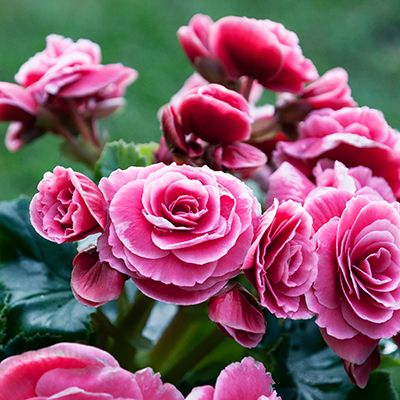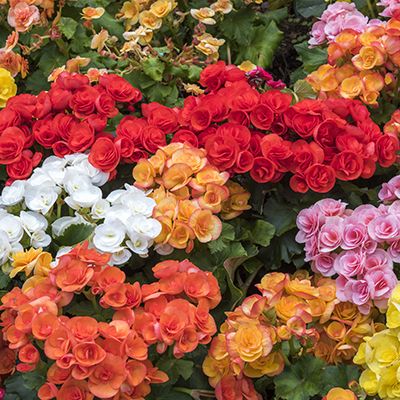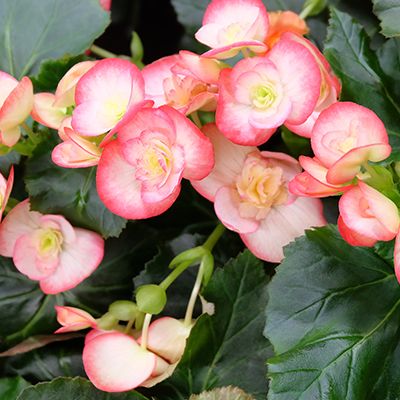


Tuberous Begonias
Tuberous Begonias were originally native to tropical South America. All of today’s Tuberous Begonias are hybrids but will retain the need for an environment similar to that of their ancestors. If the tubers (“bulbs”) are to be planted in containers, Gardener’s Gold Organic Potting Soil will be a perfect growing media. If the plants are to be planted in the ground, amend the soil with 50% Master Gardener’s Gold Rush in the planting area.
Tubers can be planted outdoors as soon as the night time temperature does not drop below 50°F. The plants should be located where they get bright filtered light but no direct sun. A location which receives two or three hours of the first morning sun will also be adequate. The amended soil must be kept moist but not soggy or dry. If the soil is soggy, the stems will fall off and the bulb will rot. If the soil gets too dry for even a day, growth will stop and not return to normal for several weeks.
When planting Tuberous Begonias as tubers (“bulbs”) they should be started indoors and grown until they have two leaves. Use the potting soil described above, plant the tubers so that the crown and tuber are only half buried. When the plant has sprouted and is transplanted to a larger container, or into the ground, ensure that half of the tuber remains above ground. When the plant stops blooming and the foliage starts to yellow, stop fertilizing and cut back on water. When the foliage is yellow, withhold water until the leaves fall off and the stem separates easily from the tuber. The tuber can then be dug, leaving it with some soil or the whole container can be stored until the following spring. Plants in containers should be fertilized monthly with Maxsea Acid Plant Formula (14-18-14 plus micronutrients); those in the ground, with the same or with Master Nursery Rose & Flower Food.
Tuberous Begonias will sometimes be attacked by aphids or mealy bugs. Both can be eliminated using a spray of horticultural soap. If mildew starts to appear, spray weekly with a sulfur solution until it is under control. By September, the plant will start to go dormant and spraying is not worth continuing.